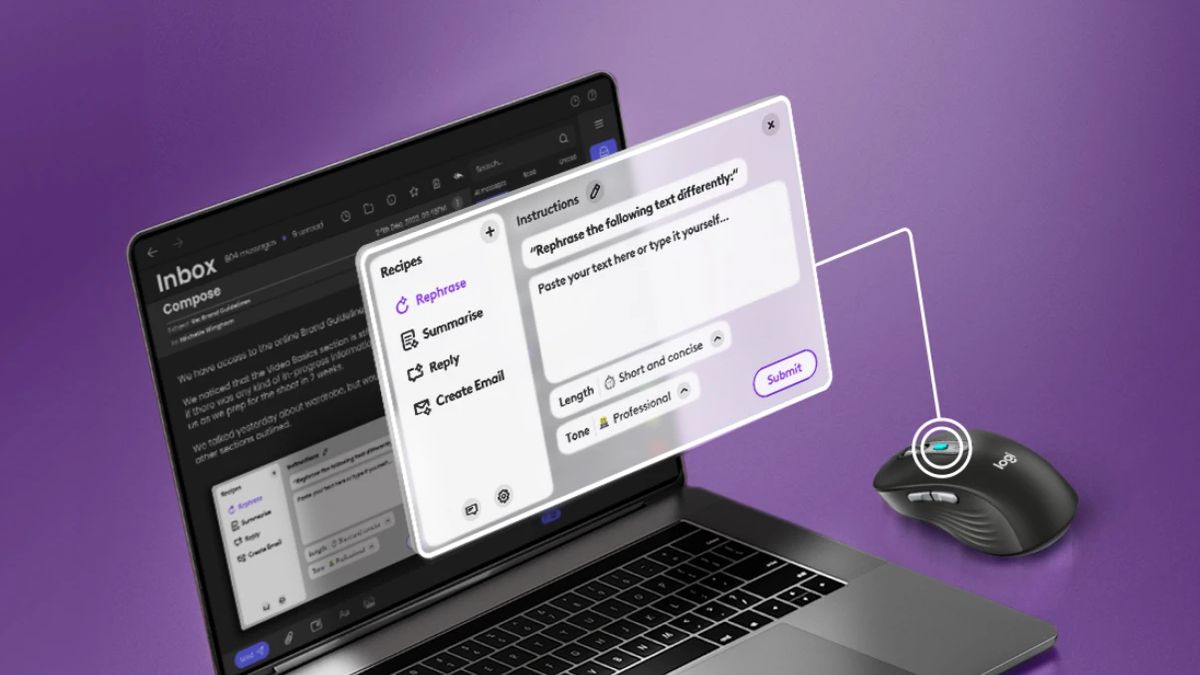

PHOTO:
PixieMe
Google Marketing Livestream 2021 featured marketing innovations in lead generation, audience insights, search image ads, customer data privacy and in-app content on YouTube and digital video.
“Overall, a lot of these changes are in line with Google’s shift toward improved on-page experiences,” said Salman Aslam, head of marketing at MuchNeeded. “I’m most interested in how the Google Analytics and reporting updates will play out. The extended modeling should, as they say, act as a sort of replacement for cookies. Marketers can take advantage of more behavioral and customer journey insights. It’s important to have that gap filled.”
Google’s Continued Data Privacy Push
Google continued to push life after third-party cookies at the one-day Google Marketing Livestream event May 27. Google’s alternative is the open-source Privacy Sandbox that intends to make cookie-tracking obsolete. It’s built on anonymized group-targeting principles vs. individuals. Google calls these groups “Federated Learning of Cohorts,” or FLoC, where brands won’t be able to determine who they are targeting specifically, but will still get to curate relevant advertisements based on the interests of each FLoC. It’s currently rolled out for a couple of months now in a developer origin trial in Chrome.
“Now is the time for our industry to rethink our practices and take bold action to regain people’s trust. That’s a key reason why we announced earlier this year that we won’t build alternate identifiers once third-party cookies are phased out,” Jerry Dischler, vice president and general manager for Ads, wrote in a blog post during Google Marketing Livestream.
Dischler touted Google’s collaboration with the web community to build solutions like those in the Privacy Sandbox, an open-source initiative. Not all are fans of the Privacy Sandbox. But Google says it will develop new technologies centered on privacy techniques like anonymization, aggregation and on-device processing designed to support key advertising use cases such as interest-based ads, measurement and more.
Google’s also making advancements in its products to help unlock insights into consumer behavior and purchasing decisions using machine learning. Dischler said they’ll soon be including Display and YouTube, as well as in-app conversions, in all Google Ads attribution models, including data-driven attribution powered by Google’s machine learning. “These changes will help you properly value the impact of all your Google Ads campaigns,” he wrote.
Related Article: As Google FLoC Trial Rolls Out, What’s a Marketer’s Next Move?
Changing Data, SEO Game
With the switch to privacy-focused advertising and the death of third-party cookies on the horizon, marketing strategies will have to change to customer-provided data campaigns, according to Bryan Philips, head of marketing at In Motion Marketing. This means, he said, shifting websites to collect emails through log-in systems and opt-in email lists.
“It also means not using cookies like exit intent popups to prompt the customer,” Philips added. “Email campaigns will now be harder to segment without cookie data as well.”
Businesses will also need to focus more on their SEO, according to Philips. They will have to build their video content, social media pages and website accordingly. “Make sure you have done proper keyword research for your tiles and descriptions of videos and posts,” Philips said. “Try localized keywords or long-tail keywords to increase your SERP ranking for niche markets.”
New Attribute Tags
Ted Liu, founder and CEO of Just SEO, said one of his biggest takeaways from Google Marketing Livestream was with new attribute tags. “As seen earlier this year, Google has rolled out an attribute tag for Black-owned businesses,” Liu noted. “The new attribute tags should include one that identifies businesses as women-led as well. This is important for marketers because this is a feature that will let them reach people who share the same beliefs as them.”
Further, in addition to Search and Shopping, touchpoints from Display and YouTube ads will soon be included in all attribution models, including data-driven attribution. Google will be integrating in-app conversions from those touchpoints as well.
Performance Max Rolls Out
Google also rolled out Performance Max, a new goal-based campaign type that allows performance advertisers to access all of Google Ads inventory from a single campaign. It’s designed to complement keyword-based search campaigns to help marketers find more converting customers across all of Google’s channels: YouTube, Display, Search, Discover, Gmail and Maps.
Marketers can now participate in the beta to help generate leads or to grow online sales without using a Google Merchant Center product feed (e.g. in industries like Entertainment, Technology and Fitness). Retailers and marketers with physical business locations should continue using Smart Shopping and Local campaigns for the upcoming holiday season, Google officials suggested.
“This feature will be available to more users as Google is extending its beta testing for it,” Liu said. “This matters for marketers because this feature allows them to set the goals they’re after, and the algorithm will take care of it for you. Now, you can focus on individual objectives at a time and clearly tell Google what it is. No guesswork, just plain Google magic.”
Performance Max campaigns will leverage Google’s machine learning to automatically place ads across all of Google’s placements, including YouTube, the display network, the search network, Google discover, Gmail and Google maps, according to Dimitris Tsapis, head of marketing at Coara.
“They’re going to be a highly-automated type of campaign,” Tsapis said. “You’ll provide details about the conversion objective, put in your creative assets for your ads along with other options, and then Google will automate bidding, add variations and optimization for you. Like all of the highly automated options in Google ads, I recommend ensuring that you have enough data to feed Google’s machine learning and run a small-scale trial once this type of campaign becomes available in your account.”
Related Article: How Google Ads Performance Planner Ties Performance to Marketing ROI
Image Extensions in SERPs
Google announced image extensions in a move designed to make marketers’ search ads more visual and engaging. These are now available globally. Image extensions allow advertisers to upload visuals to complement their existing text ads.
“The good thing advertisers and marketers should know about this? They can now add high-quality images in search adverts which will help their campaigns stand out from the rest,” said William Cannon, founder of Uplead.
Custom Audiences Gets a Boost
Marketers can create custom audiences in Display, Discovery, Gmail and Video campaigns by adding specific keywords, URLs and apps related to products or services. Google Ads reviews these additions to ensure that they abide by advertising policies, and then show ads to people with these interests or purchase intentions on pages, apps and videos.
What’s new? Previously, marketers could create custom intent or custom affinity audience types. With the new custom audiences this choice is no longer needed: based on campaign goals and keywords, the new custom audiences will interpret all of these signals behind the scenes to tune toward Reach, Consideration or Performance, according to Google officials. Those who previously selected target audiences by custom intent and custom affinity don’t need to do anything. Those audiences will be automatically migrated to custom audiences.
“The new custom audience rollout and consent-mode tracking capability were two of the key takeaways I got,” said Michael Knight, co-founder and head of marketing at Incorporation Insight. “Custom audiences are a mixture of custom intent and custom affinity, which means that marketers can now create marketing campaigns based on customer interest or purchase intents, as well as search history, across all Google platforms. Custom audiences provide greater flexibility and convenience. It will automatically select the appropriate audience based on your inputs and the goal of your campaign.”
Consent-mode tracking is currently in beta, Knight also noted, but it allows marketers to modify how their Google tags respond depending on the consent provided by clients/users. This feature will allow marketers to track conversions without invading your users’ privacy or consent.
Related Article: Is It Time to Add Google Local Service Ads to Your Marketing Strategy?
Enhanced Conversions
Enhanced conversions provide a more accurate, privacy-safe view of performance — even when fewer cookies are available, according to Google officials. Enhanced conversions supplements existing conversion tags by sending hashed first-party conversion data from websites in a privacy-safe way, according to Google officials. The feature uses a secure one-way hashing algorithm called SHA256 on first-party customer data, such as email addresses, before sending to Google. The hashed data is then matched with signed-in Google accounts in order to attribute campaign conversions to ad events, such as clicks or views
“Enhanced conversions are designed to improve the accuracy of conversion data for your campaigns,” Tsapis said. “It lets you securely send first-party data to Google ads when someone converts on your website.”
Tsapis cited the example of someone completing a lead form, from which a marketer can then send their hashed email address to Google. Details are then matched to signed-in Google accounts so that conversions are attributed to clicks views and other events associated with ads. You can set up enhanced conversions using Google tag manager or the global site tag.
Customer Match and Responsive Search Ads
Customer Match lets marketers use online and offline data to reach and re-engage with customers across search, the shopping tab, Gmail, YouTube and display. Using information that customers have shared, Customer Match will target ads to those customers and other customers like them.
“Customer Match is a more widely available new attribution reporting will include more touchpoints for different types of campaigns,” Tsapis said. “Ad customizers will be available for responsive search ads a new version of the insights page will be rolling out in the coming months. Also, there’s a new tool to help import offline conversions into Google ads. It’s called the offline conversion import helper.”
Google Analytics Changes
Google has announced a number of upcoming changes to Google Analytics 4 or GA4. For reports, GA4 will let administrators completely customize the reporting experience inside the interface.
“We can see a new report customization feature, options to change the metrics and dimensions included in reports along with the charts and cards that are included in a report,” Tsapis said. “We can see an updated menu and then options to customize the menu and the reports included in the menu. They’ve also announced that we will be able to customize the home report in GA4.”
Apart from changes to the reports and interface Google also announced a new advertising workspace in GA4. This will see the addition of new reports and attribution options. “I’ve heard from lots of people wanting more attribution options in GA4, so this announcement is great to hear,” Tsapis added.
The other exciting news, according to Tsapis, is that Google said that modeling will be extended to the behavior reports. This means that Google Analytics will be able to fill in even more gaps if data isn’t available for some users.
New Features in Google Tag Manager
Updates to Google Tag Manager includes a new consent initialization trigger that lets marketers control when tags are fired based on user consent and new tag settings that let you manage consent.
“Overall these new privacy features will allow you to connect Google Tag Manager to a consent management platform so that specific tags are only fired when required,” Tsapis said. “We can choose when the tag is fired based on user consent.”
If marketers need people to opt-in before this tag fires, then they can use the required additional consent option to ensure the tag fires after someone has accepted the use of cookies. And there is a new consent overview page that provides top-level details about your consent settings.





